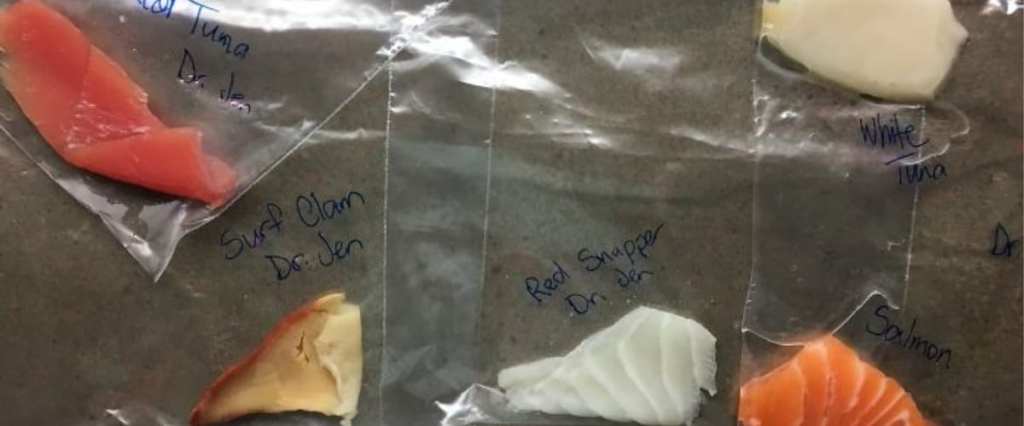Fair warning: if you’re a seafood lover who regularly purchases fish from the store or goes out for sushi, proceed with caution. There are some scientific results below that are, at best, upsetting.
At worst? You might vomit in your mouth.
It all began when biology professor Dr. Jennifer McDonald was looking for a way to bring a little excitement to her senior molecular biology course. So she sent them to sushi restaurants and grocery stores and told them to bring samples of their fish back to the lab so they could extract the DNA and determine whether the DNA matched the label.

Image Credit: Twitter
They tested 13 samples and 9 had good enough DNA sequences to determine their species.
Of those 9? Only 2 were labeled correctly.
Yeah. And that’s not the worst part.
It’s been well documented over the past decade that fish mislabelling is prolific all over the global supply chain – it’s also illegal and results in fines (when detected). According to McDonald, about 50% of fish is believed to be labelled incorrectly (whether intentionally or not), with some species like red snapper and white tuna more likely to be mislabelled than others.
Not only is it unethical to sell people fish that is not the fish they’re expecting, it can also result in health issues (a common substitute for white tuna is escolar, which can cause gastrointestinal distress) and/or allergic reactions (shellfish is one of the more common – and more deadly – food allergies).
So Dr. McDonald wasn’t shocked at the findings.
At least, not until this happened.
Yeah.
Dr. McDonald doesn’t plan to stop eating fish or sushi, and she doesn’t think you should, either – just make sure to go to restaurants where you feel confident in their fish suppliers and ask questions when something doesn’t look, feel, or taste right.
Which might be easier said than done, although the fact that sushi is so delicious should help buck you up.






